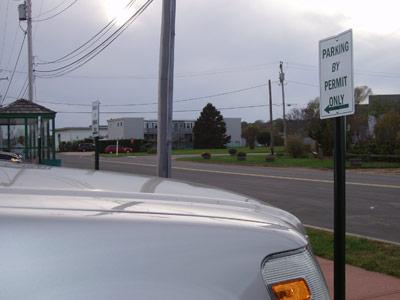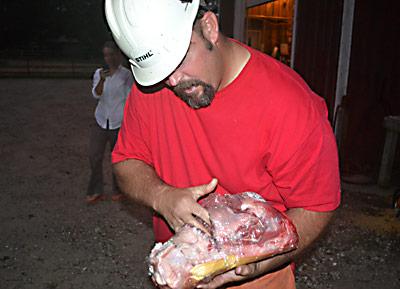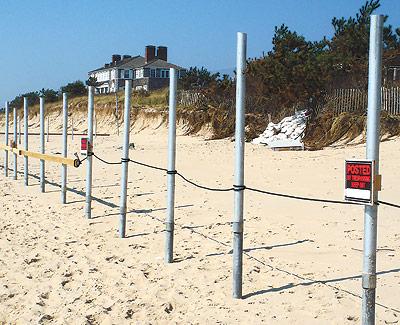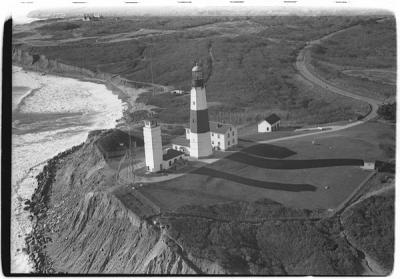Honking Over Parking Plan
Honking Over Parking Plan

A handful of new parking-by-permit-only signs posted in two public lots in Montauk have some cheering and at least one business owner scratching his head and asking why.
The signs are part of an East Hampton Town project that added some 40 parking spaces to the hamlet by reconfiguring a number of spaces from parallel parking to head-on early last summer.
The signs have been installed to mark off 16 residents-only spaces plus one for handicapped access in the back row south of the larger lot behind Plaza Sports, Wok and Roll, the Corner Store, and Atlantic Beach Realty. Five more spaces are to the north in the lot behind Chase Bank near the police annex and the Hampton Jitney stop.
Hy Brodsky, a member of the Montauk Citizens Advisory Committee who often rides the Jitney, is cheering the new signs, which he’s been lobbying for since 2009 at town board meetings and at advisory committee meetings.
“Finally an administration that is supposed to be looking out for its community is doing their job,” he said, giving kudos specifically to East Hampton Town Councilwoman Julia Prince, who headed up the project.
His frequent trips on the Jitney, Mr. Brodsky explained, led him to realize that there was no place in the downtown area of the hamlet designated only for residents to park. He said he studied the situation and learned that people were parking in the lot behind Chase Bank near the Jitney stop and leaving their vehicles there overnight, monopolizing the spaces.
“Residents should have a place to park in all of the lots. There’s plenty of parking spaces on the streets now for out-of-towners to park their cars,” Mr. Brodsky said.
“I think it’s great,” said Lynden Restrepo of Atlantic Beach Realty. “It’s the best thing they ever did.” Employees who work downtown are often ticketed because they can’t find a place to park that isn’t restricted to a two-hour limit, she said. Most signs there limit parking to two hours between 9 a.m. and 5 p.m. “It seems the locals always get screwed. We come to work and we can’t find a place to park,” she said.
Ms. Prince, who is not running for re-election, said the spaces were marked for the convenience of people who work in the area. The project, one she’s been working on with others in the community and that is now complete, also included adding a two-hour limit in front of businesses to the east so cars wouldn’t clog up parking spaces while people go to the beach for the day, she said.
Peter Ferraro of Plaza Sports said he called the Montauk Chamber of Commerce to complain. The public lots, he said, were supposed to be used by customers looking to spend time in local stores, restaurants, and other businesses. “I just don’t understand why they did it,” he said.
Laraine Creegan, the chamber’s executive director, said she was still researching the situation following Mr. Ferraro’s phone call. “I’d like to meet with the town about it,” she said, adding that she thinks the town overdid it. “I’m not opposed to the town adding, say, five [permit-designated] spaces in each lot. I understand that,” she said.
Mr. Brodsky said he would fight as hard as he could to keep the spaces. “As far as I’m concerned, I applaud this move. Julia did a wonderful job with this,” he said.









